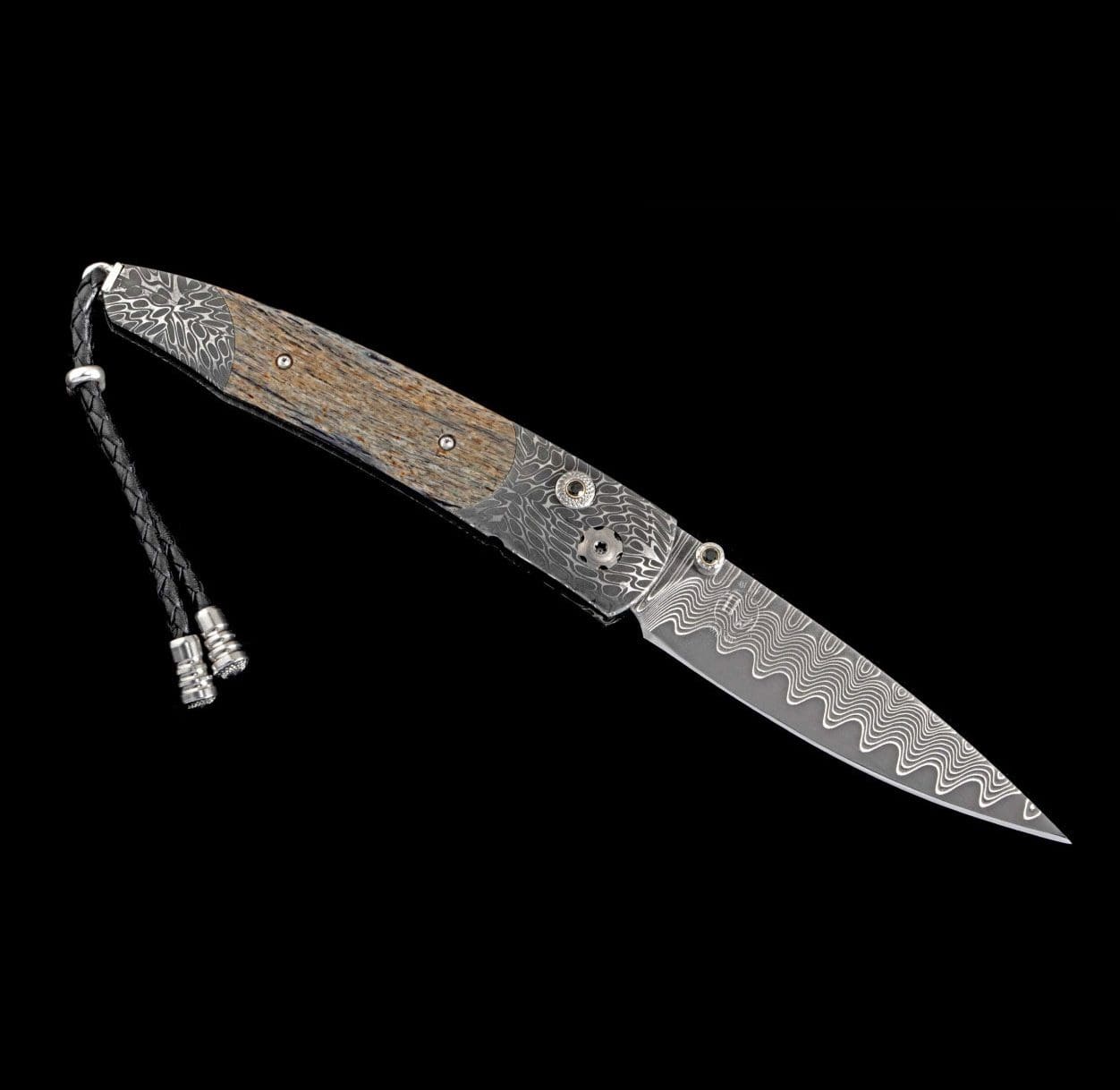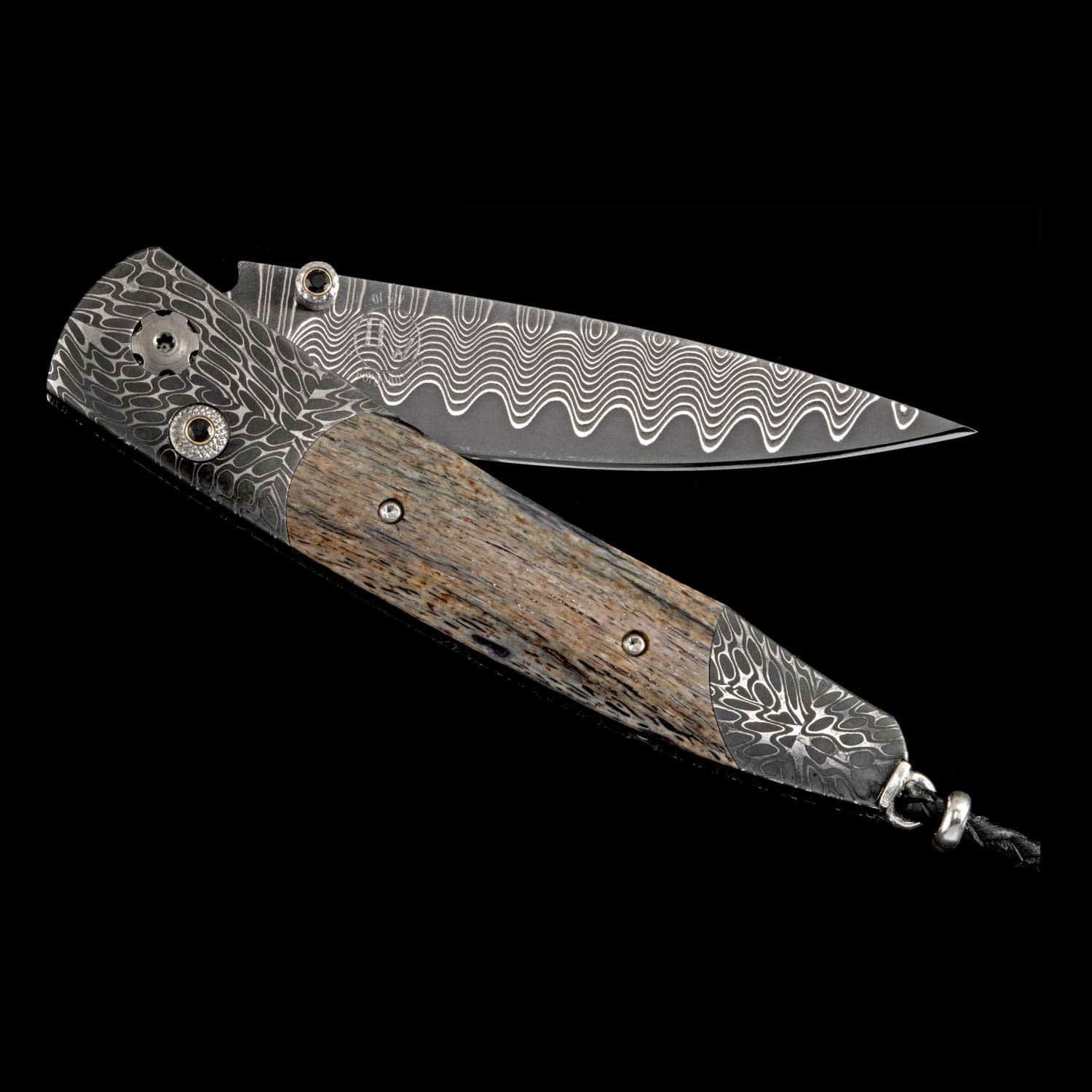Description
B10 MAMMUT
The Lancet ‘Mammut’ features a frame in hand-forged ‘River Rock’ Damascus by Chad Nichols, one of the leading Damascus artists in the United States. This frame has been inlaid with a stunning piece of 10,000-year-old fossil Woolly Mammoth bone, and the blade is crafted from ‘Wave’ Damascus with a VG-10 core. The one-hand button lock and the thumb stud are set with fine spinel gemstones. Sleek, elegant, refined, and comfortable in the hand and to the eye, the Lancet defines the essential gentleman’s folder in the modern world. The ‘Mammut’ features some of the exotic materials and hand-forged metals that are the hallmark of William Henry’s collections; a distinctive personality statement to be worn and used for a lifetime.
FEATURES & SPECS:
- One-hand button lock system
- Leather carrying case
- Shipped in an elegant wood presentation box
Dimensions:
- Blade 2.75″ (69.9mm)
- Handle 3.63″ (92.2mm)
- Overall open 6.38″ (162mm)
FOSSIL MAMMOTH BONE
From a Woolly Mammoth that walked the Earth at least 10,000 years ago.
Modern humans coexisted with woolly mammoths during the Upper Paleolithic period when they entered Europe from Africa between 30,000 and 40,000 years ago. Prior to this, Neanderthals had coexisted with mammoths during the Middle Paleolithic and up to that time. Woolly mammoths were very important to Ice Age humans, and their survival might have depended on these animals in some areas.
The woolly mammoth is the next most depicted animal in Ice Age art after horses and bison, and these images were produced up to 11.500 years ago. Today, more than five hundred depictions of woolly mammoths are known, in media ranging from carvings and cave paintings located in 46 caves in Russia, France, and Spain, to sculptures and engravings made from different materials.
William Henry’s fossil Mammoth bone is harvested in Alaska and Siberia. It is a rare and mesmerizing material, a living testimony of the dawn of Mankind.
ETCHED DAMASCUS
This material obtained by immersing a traditional damascus billet it in an acid solution. The processcreates a striking visual contrast by enhancing the components that are more susceptible to the etching of the acid.
WAVE DAMASCUS
William Henry’s patent-pending Wave Damascus features a core in ZDP-189 (HRC 67) or VG-10 (cryo-tempered to a hardness of HRC 61) for superior sharpness and edge retention over time. The core of the blade is clad with alternating layers of stainless steel and nickel silver. The billet, 45 layers in all, is patterned with a custom die to create the undulating waves that emerge across the bevels of the blade. This material can be dark-etched for contrast, or etched and re-polished for a more subtle pattern.
Visit us in our Freeport, Maine showroom to see this Mammut knife as well as the rest of our full William Henry selection including pens, knives, money clips, and men’s jewelry.




